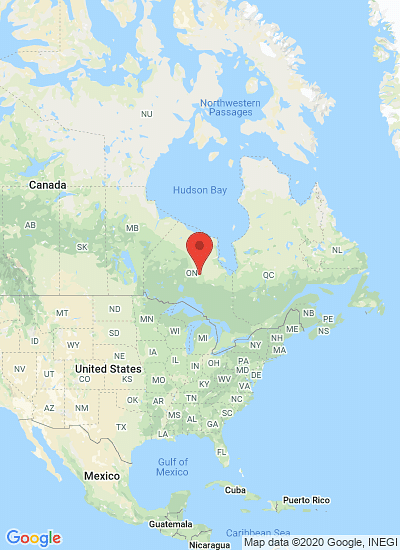Peeled Innate® Gen 2 Hibernate (Atlantic) potato, left, next to a conventional Snowden potato (Courtesy: J.R. Simplot Company)
Second Generation Innate® Potatoes Receive Approval in Canada

Health Canada and Canadian Food Inspection Agency (CFIA) have completed the food, feed, and environmental safety assessments of the J.R. Simplot Company’s second generation of Innate® potatoes. The authorizations enable the potatoes to be imported, planted, and sold in Canada, complementing the three varieties of Innate® first generation potatoes that received regulatory approval last year.
Health Canada conducted a comprehensive safety assessment and approved the use of Innate® second generation potatoes for food. In addition, CFIA determined that these potatoes are “as safe and nutritious as traditional potatoes” for use as livestock feed, and that the potatoes do not present increased risk to the environment when compared to currently cultivated potato varieties in Canada.
Second Generation Innate® Potatoes
The second generation of Innate® potatoes contains four beneficial traits of relevance to potato growers, processors and consumers:
Innate® late blight protection trait can convey up to a 50 percent reduction in annual fungicide applications typically used to control late blight disease. This disease was a contributing cause of the Irish Potato Famine in the mid-19th century and remains a major constraint for production and storage.
Further, research shows that Innate® second generation potatoes help reduce waste associated with bruise, blight, and storage losses by reducing waste at multiple stages of the value chain, including in-field, during storage and processing, and in food service. That research suggests that these traits will translate to less land, water, and pesticide applications to produce these potatoes.
Lower asparagine and reducing sugars mean that accumulation levels of acrylamide can be reduced by up to 90 percent more when these potatoes are cooked at high temperatures. In addition, lower reducing sugars enable cold storage at 3.3° Celsius for more than six months without significant degradation in quality.
According to academic estimates, if all fresh potatoes in Canada had Innate® Generation 2 traits, potato waste (in-field, during storage, packing, retail and foodservice for fresh potatoes) could be reduced by 93 million kilograms. In addition, CO2 emissions could be reduced by 14 million kilograms, water usage reduced by 13 billion liters, and a total of 154,000 fewer pesticide hectare-applications would be needed.
Kevin MacIsaac, General Manager of the United Potato Growers of Canada:
Health Canada conducted a comprehensive safety assessment and approved the use of Innate® second generation potatoes for food. In addition, CFIA determined that these potatoes are “as safe and nutritious as traditional potatoes” for use as livestock feed, and that the potatoes do not present increased risk to the environment when compared to currently cultivated potato varieties in Canada.
Second Generation Innate® Potatoes
The second generation of Innate® potatoes contains four beneficial traits of relevance to potato growers, processors and consumers:
- Protection against the late blight pathogen
- Reduced bruising and black spot
- Reduced asparagine, which contributes to reduced acrylamide in cooked potatoes
- Lower reducing sugars, which further contributes to reduced acrylamide while enhancing cold storage capability
Innate® late blight protection trait can convey up to a 50 percent reduction in annual fungicide applications typically used to control late blight disease. This disease was a contributing cause of the Irish Potato Famine in the mid-19th century and remains a major constraint for production and storage.
Further, research shows that Innate® second generation potatoes help reduce waste associated with bruise, blight, and storage losses by reducing waste at multiple stages of the value chain, including in-field, during storage and processing, and in food service. That research suggests that these traits will translate to less land, water, and pesticide applications to produce these potatoes.
Lower asparagine and reducing sugars mean that accumulation levels of acrylamide can be reduced by up to 90 percent more when these potatoes are cooked at high temperatures. In addition, lower reducing sugars enable cold storage at 3.3° Celsius for more than six months without significant degradation in quality.
According to academic estimates, if all fresh potatoes in Canada had Innate® Generation 2 traits, potato waste (in-field, during storage, packing, retail and foodservice for fresh potatoes) could be reduced by 93 million kilograms. In addition, CO2 emissions could be reduced by 14 million kilograms, water usage reduced by 13 billion liters, and a total of 154,000 fewer pesticide hectare-applications would be needed.
Kevin MacIsaac, General Manager of the United Potato Growers of Canada:
“This is a big technology advancement for the Canadian potato industry.”Susan Collinge, Ph.D., Vice President of Simplot Plant Sciences, a division of the J.R. Simplot Company:
“As long as proper stewardship guidelines are followed, Innate® biotechnology provides growers a promising option to significantly reduce waste, chemicals, and pesticides.”
“We’re excited to offer the latest generation of Innate® potatoes to the Canadian marketplace.”
“Innate second generation potatoes offer important benefits while staying within the potato genome to create a quality crop.”
Like to receive news like this by email? Join and Subscribe!
Join Our Telegram Channel for regular updates!
Uitgelichte Bedrijven
Sponsored Content
Sponsored Content
Sponsored Content
Sponsored Content
Sponsored Content
















